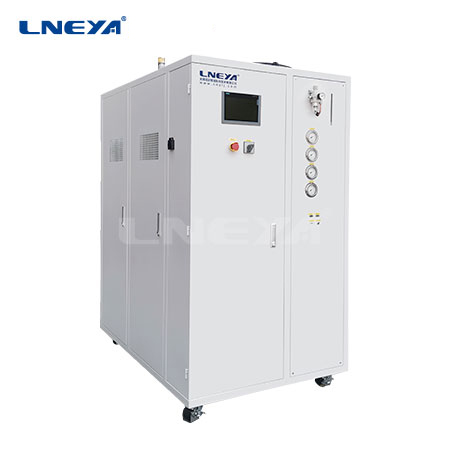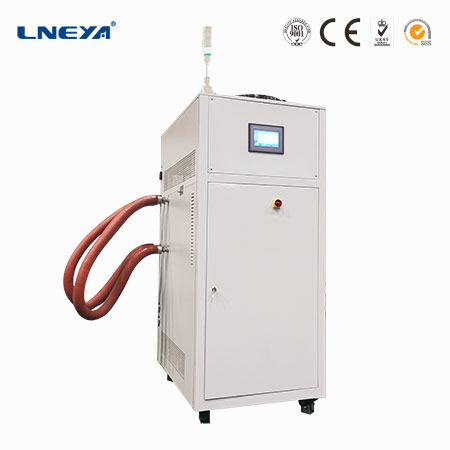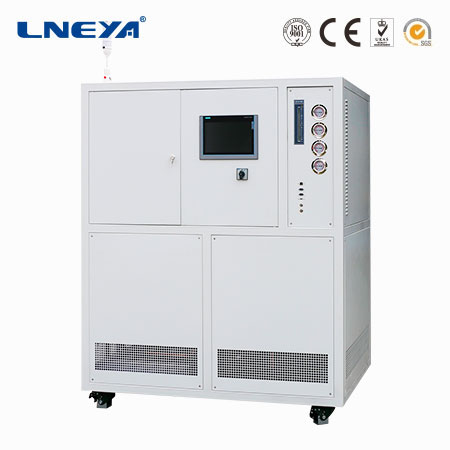How to choose a hydrogen chiller?
The chiller (also called cooling system or chiller) in the hydrogen production process is one of the key components to ensure the stable operation of the hydrogen production equipment. The chiller helps maintain the electrolyzer, reactor and other key components within the optimal operating temperature range by providing precise temperature control.
The role of chillers in hydrogen production
Temperature control:
• During the process of hydrogen production by electrolysis of water, the electrolyzer needs to be kept within a certain temperature range to optimize hydrogen production efficiency and extend equipment life.
• The cooling system removes the heat generated by the electrolyzer through a circulating cooling medium (usually water or ethylene glycol solution) to ensure its temperature stability.
Improve efficiency:
• Proper temperature control can reduce energy loss and improve the overall efficiency of the hydrogen production process.
• Avoiding overheating can prevent damage to the electrolyzer and other components, thereby reducing maintenance costs.
Safety protection:
• The cooling system helps prevent potential safety risks caused by overheating, such as dry burning of the electrolyzer or material failure.
• Provide overtemperature protection function, automatically shut down or alarm when abnormal temperature is detected.
Adapt to a variety of hydrogen production processes:
• Different hydrogen production methods (such as alkaline electrolysis, proton exchange membrane electrolysis, solid oxide electrolysis, etc.) have different temperature requirements, and the chiller needs to be able to adapt to these different process requirements.
Main types of hydrogen chillers
- Air-cooled chillers:
- Cool the circulating medium by dissipating heat through air.
- Suitable for places with limited space or water resources.
- Easy to install, but the cooling efficiency may be greatly affected by the ambient temperature.
- Water-cooled chillers:
- Dissipate heat through an external cooling tower or other water source.
- Better cooling effect, suitable for applications with high power or high temperature difference.
- Requires additional cooling towers and water supply systems, and the installation is relatively complicated.
- Cascade low-temperature chillers:
- Suitable for hydrogen production processes that require extremely low temperatures (such as below -40°C).
- Usually a two-stage or multi-stage refrigeration system is used to achieve lower temperature control.
- Cascade low-temperature chillers:
- Suitable for hydrogen production processes that require extremely low temperatures (such as below -40°C).
- Usually a two-stage or multi-stage refrigeration system is used to achieve lower temperature control.
Key technical parameters
- Refrigeration capacity:
- Select the appropriate refrigeration capacity according to the scale and heat generation of the hydrogen production equipment.
- For example, for large industrial hydrogen production units, a refrigeration capacity of more than 1500 kW may be required.
- Temperature control range:
•Precise control is usually required over a wide temperature range, such as from room temperature to -40°C or lower.
•Control accuracy is generally required to be ±1°C or less. - Flow rate:
•The flow rate of the cooling medium should be determined according to the needs of the hydrogen production equipment, usually tens to hundreds of liters per minute. - Automated control:
•Equipped with PID controller or other advanced temperature control technology to achieve automated temperature regulation.
•Support remote monitoring and data logging functions for easy management and maintenance.
Chillers related to hydrogen production play a vital role in ensuring efficient and safe operation of hydrogen production equipment. When selecting a suitable chiller, factors such as cooling capacity, temperature control range, flow rate, automation control, and safety protection measures need to be considered comprehensively.
Recommended Products
- MORE
KRY -40℃~+100℃ (1to6)
The components are cooled and heated internally through ethylene glycol aqueous solution for testing -40 ° C~100 ° C (expandable to 150 ° C) For the power battery charging management, the precision …
- MORE
KRY -40℃~+100℃ (1to1)
Refrigeration, heating, temperature control, flow control Connect the tested object to a testing platform adapterThe components are cooled and heated internally through ethylene glycol aqueous solution for testing. …
- MORE
KRY -40℃~+100℃ (1to2)
Temperature range is -40℃~+100℃, which can be extended to +135℃ according to the actual situation, and the temperature control accuracy is plus or minus 0.5℃. Theequipment can control the flow and pressure independently while c…
- MORE
KRY -40℃~+100℃ (1to3)
Dimension(A) cm Temperature range is -40℃~+100℃, which can be extended to +135℃ according to the actual situation, and the temperature control accuracy is plus or minus 0.5℃. Theequipment can control the flow and…
loading…
已经是到最后一篇内容了!
 LNEYA Industrial Chillers Manufacturer Supplier -
LNEYA Industrial Chillers Manufacturer Supplier -















